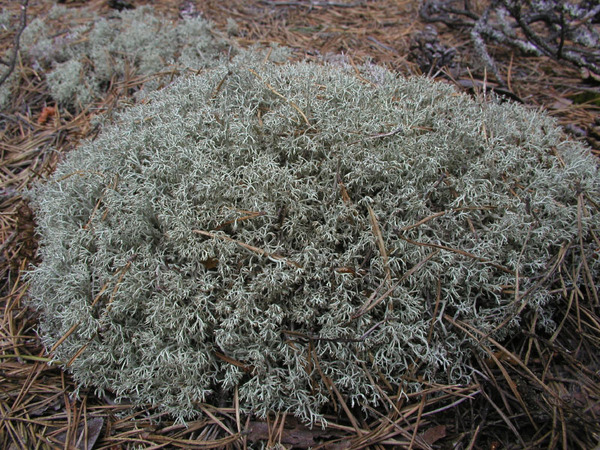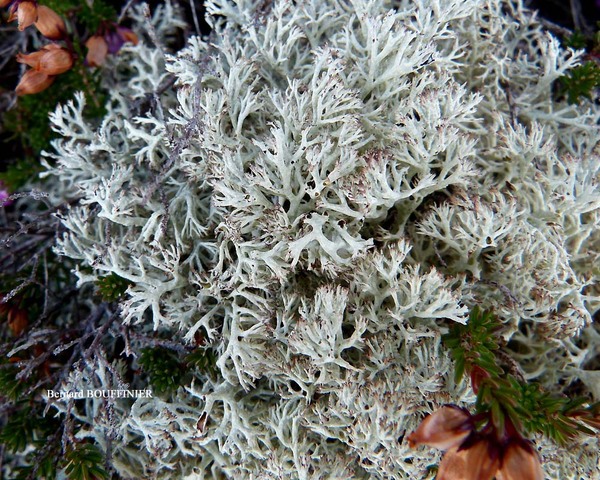Cladonia mitis Sandst.
Clad. Exs.: nr. 55, 1918.
Synonyms: Cladina arbuscula subsp. mitis (Sandst.) Burgaz; Cladina mitis (Sandst.) Mong.; Cladonia arbuscula subsp. mitis (Sandst.) Ruoss; Cladonia subsylvatica (Stirt.) Zahlbr.
Distribution: N - Frl (Tretiach & Hafellner 2000, Ravera & al. 2015), Ven (Caniglia & al. 1999, Ravera & al. 2015), TAA (Nascimbene & al. 2008c, 2022, Bilovitz & al. 2014, Ravera & al. 2015), Lomb (Rivellini 1994, Rivellini & Valcuvia 1996, Nascimbene 2006, Ravera & al. 2015, 2024c), Piem (Morisi & Sereno 1995, Isocrono & Falletti 1999, Isocrono & al. 2003, Isocrono & Piervittori 2008, Ravera & al. 2015, 2024c), VA (Borlandelli & al. 1996, Piervittori & Isocrono 1997, 1999, Valcuvia 2000, Ravera & al. 2015), Emil (Benesperi 2001, Dalle Vedove & al. 2002, Benesperi & al. 2007, Ravera & al. 2015, Fariselli & al. 2020), Lig (Ravera & al. 2015). C - Marc (Nascimbene & al. 2021), Tosc (Benesperi 2001, Benesperi & al. 2007, Ravera & al. 2015).
Description: Primary thallus crustose, ephemeral, rarely seen. Podetia shrub-like, hollow inside, esquamulose, ecorticate, the surface compact or finely arachnoid, pale yellowish white, anisotomically (i.e. main branches thicker) mainly trichotomously branched, 4-12 cm tall, the terminal branchlets generally - not always – spreading in all directions, not or only slightly browned at tips. Apothecia rare, brown, convex, very small. Asci 8-spored, clavate, thickened at apex, with a K/I+ blue tholus and a K/I+ strongly blue outer gelatinous sheath, Cladonia-type. Ascospores 1-celled, hyaline, ellipsoid. Pycnidia dark, semi-immersed, on the tips of podetia, with a colourless jelly. Conidia hyaline, curved. Photobiont chlorococcoid. Spot tests: K-, C-, KC+ yellow, P-, UV-. Chemistry: mostly usnic, isousnic, rangiformic and norrangiformic acids; rarely rangiformic acid absent.Note: a typical member of subalpine-alpine tundras, perhaps more common at higher altitudes than C. arbuscula, widespread in the Alps, rare in the Northern Apennines. It was assessed as “Least Concern” in Italy by Ravera & al. (2015).
Growth form: Fruticose
Substrata: soil, terricolous mosses, and plant debris
Photobiont: green algae other than Trentepohlia
Reproductive strategy: mainly asexual, by thallus fragmentation
Commonnes-rarity: (info)
Alpine belt: rather rare
Subalpine belt: rather common
Oromediterranean belt: absent
Montane belt: absent
Submediterranean belt: absent
Padanian area: absent
Humid submediterranean belt: absent
Humid mediterranean belt: absent
Dry mediterranean belt: absent
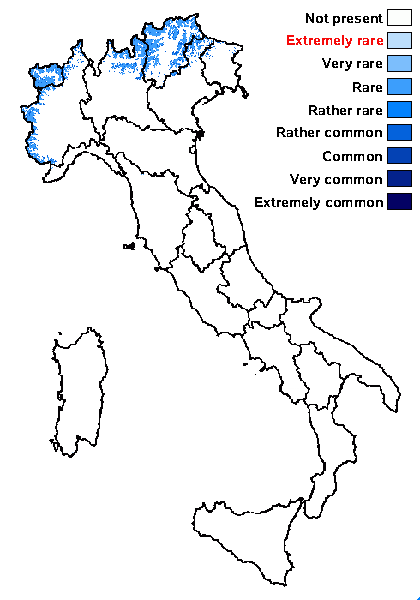
Predictive model
Herbarium samples
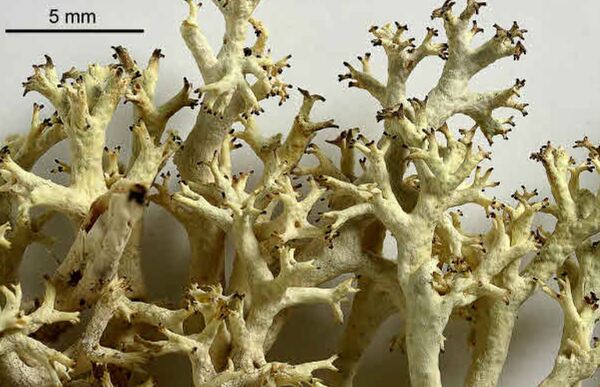

Felix Schumm – CC BY-SA 4.0
[18969], Australia, Victoria, Basalt Hill, Alpine National Park, Bogong High Plains, 20 km south-east of Mt. Beauty, 36°53' S, 147°18' E, 1650 m, growing on soil and debris in exposed alpine grasslands with basalt outcrops and southerly aspect. Leg. J.A. Elix (40372) & H. Streimann, 17.02.1994.
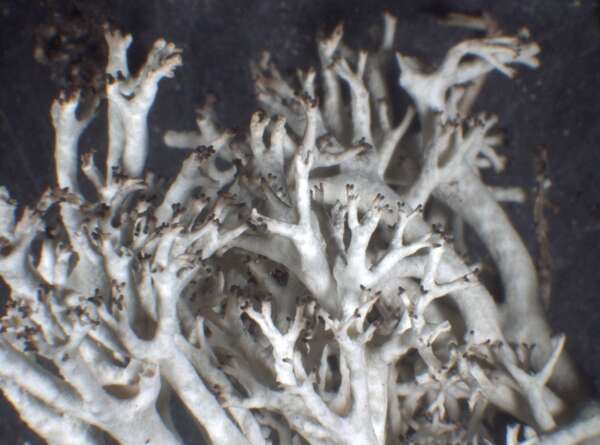

P.L. Nimis; Owner: Department of Life Sciences, University of Trieste
Herbarium: TSB (33276)
2003/02/15
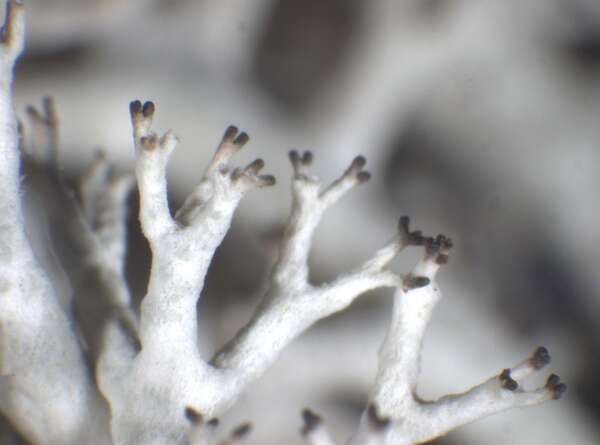

P.L. Nimis; Owner: Department of Life Sciences, University of Trieste
Herbarium: TSB (33276)
2003/02/15


Felix Schumm – CC BY-SA 4.0
[18969], Australia, Victoria, Basalt Hill, Alpine National Park, Bogong High Plains, 20 km south-east of Mt. Beauty, 36°53' S, 147°18' E, 1650 m, growing on soil and debris in exposed alpine grasslands with basalt outcrops and southerly aspect. Leg. J.A. Elix (40372) & H. Streimann, 17.02.1994.
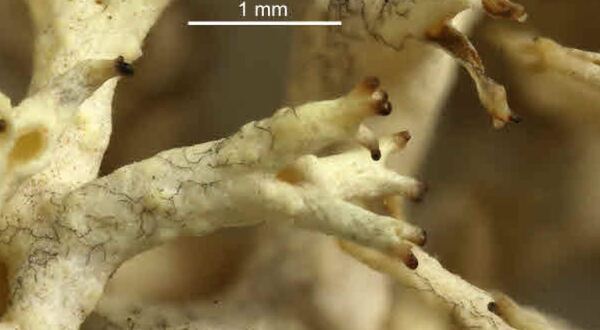

Felix Schumm – CC BY-SA 4.0
[18969], Australia, Victoria, Basalt Hill, Alpine National Park, Bogong High Plains, 20 km south-east of Mt. Beauty, 36°53' S, 147°18' E, 1650 m, growing on soil and debris in exposed alpine grasslands with basalt outcrops and southerly aspect. Leg. J.A. Elix (40372) & H. Streimann, 17.02.1994.


Felix Schumm – CC BY-SA 4.0
[18969], Australia, Victoria, Basalt Hill, Alpine National Park, Bogong High Plains, 20 km south-east of Mt. Beauty, 36°53' S, 147°18' E, 1650 m, growing on soil and debris in exposed alpine grasslands with basalt outcrops and southerly aspect. Leg. J.A. Elix (40372) & H. Streimann, 17.02.1994.
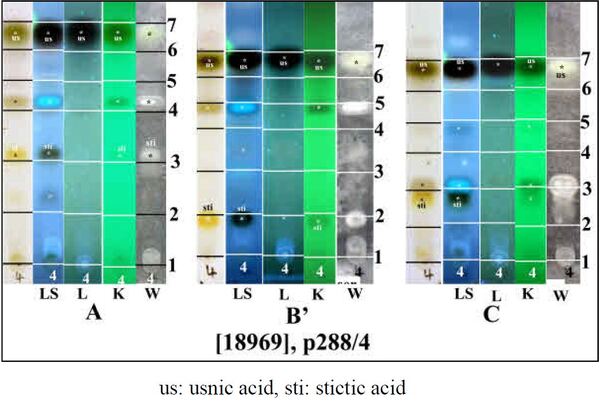

Felix Schumm – CC BY-SA 4.0
[18969], Australia, Victoria, Basalt Hill, Alpine National Park, Bogong High Plains, 20 km south-east of Mt. Beauty, 36°53' S, 147°18' E, 1650 m, growing on soil and debris in exposed alpine grasslands with basalt outcrops and southerly aspect. Leg. J.A. Elix (40372) & H. Streimann, 17.02.1994.
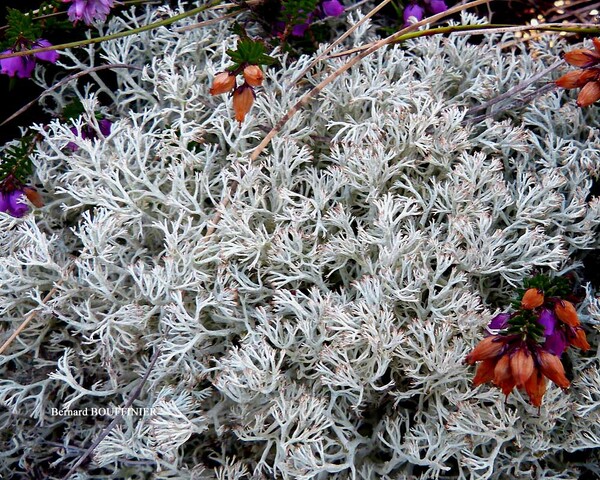
Bernard Bouffinier - Source: http://www.lichensmaritimes.org/index.php?task=fiche&lichen=433&lang=en
France, Pointe du Guern
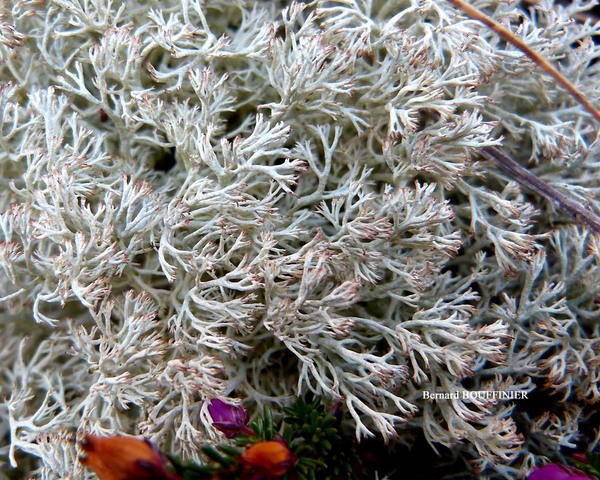
Bernard Bouffinier - Source: http://www.lichensmaritimes.org/index.php?task=fiche&lichen=433&lang=en
France, Pointe du Guern
Growth form: Fruticose
Substrata: soil, terricolous mosses, and plant debris
Photobiont: green algae other than Trentepohlia
Reproductive strategy: mainly asexual, by thallus fragmentation
Commonnes-rarity: (info)
Alpine belt: rather rare
Subalpine belt: rather common
Oromediterranean belt: absent
Montane belt: absent
Submediterranean belt: absent
Padanian area: absent
Humid submediterranean belt: absent
Humid mediterranean belt: absent
Dry mediterranean belt: absent

Predictive model
| Herbarium samples |


Felix Schumm – CC BY-SA 4.0
[18969], Australia, Victoria, Basalt Hill, Alpine National Park, Bogong High Plains, 20 km south-east of Mt. Beauty, 36°53' S, 147°18' E, 1650 m, growing on soil and debris in exposed alpine grasslands with basalt outcrops and southerly aspect. Leg. J.A. Elix (40372) & H. Streimann, 17.02.1994.


P.L. Nimis; Owner: Department of Life Sciences, University of Trieste
Herbarium: TSB (33276)
2003/02/15


P.L. Nimis; Owner: Department of Life Sciences, University of Trieste
Herbarium: TSB (33276)
2003/02/15


Felix Schumm – CC BY-SA 4.0
[18969], Australia, Victoria, Basalt Hill, Alpine National Park, Bogong High Plains, 20 km south-east of Mt. Beauty, 36°53' S, 147°18' E, 1650 m, growing on soil and debris in exposed alpine grasslands with basalt outcrops and southerly aspect. Leg. J.A. Elix (40372) & H. Streimann, 17.02.1994.


Felix Schumm – CC BY-SA 4.0
[18969], Australia, Victoria, Basalt Hill, Alpine National Park, Bogong High Plains, 20 km south-east of Mt. Beauty, 36°53' S, 147°18' E, 1650 m, growing on soil and debris in exposed alpine grasslands with basalt outcrops and southerly aspect. Leg. J.A. Elix (40372) & H. Streimann, 17.02.1994.


Felix Schumm – CC BY-SA 4.0
[18969], Australia, Victoria, Basalt Hill, Alpine National Park, Bogong High Plains, 20 km south-east of Mt. Beauty, 36°53' S, 147°18' E, 1650 m, growing on soil and debris in exposed alpine grasslands with basalt outcrops and southerly aspect. Leg. J.A. Elix (40372) & H. Streimann, 17.02.1994.


Felix Schumm – CC BY-SA 4.0
[18969], Australia, Victoria, Basalt Hill, Alpine National Park, Bogong High Plains, 20 km south-east of Mt. Beauty, 36°53' S, 147°18' E, 1650 m, growing on soil and debris in exposed alpine grasslands with basalt outcrops and southerly aspect. Leg. J.A. Elix (40372) & H. Streimann, 17.02.1994.

Bernard Bouffinier - Source: http://www.lichensmaritimes.org/index.php?task=fiche&lichen=433&lang=en
France, Pointe du Guern

 Index Fungorum
Index Fungorum
 GBIF
GBIF
